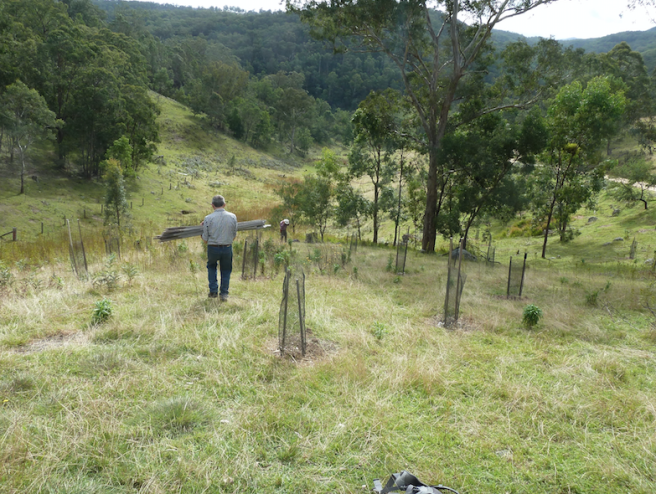One of the things I’m doing while in Australia is getting involved with some of the activities that Sanford participates in.
One such activity is bush care. The purpose of bush care is to restore the natural environment in urban and coastal areas across Australia. This is a very popular activity in this part of the world and there are hundreds of volunteers. Sanford volunteers in groups formed from another organization he is involved with, Coast and Mountain Walkers.
I have participated twice so far. The first time I was part of a group of 8 volunteers that went to Ku-ring-gai Chase National Park. Our purpose for the day was to clear patches of land of crofton weed, an invasive weed, not indigenous to Australia. We arrived at the park around 9 am, hiked about 5 km in, learned how to identify the weed, got to work pulling this weed, and then hiked out. We took breaks for morning tea and lunch, which we had brought with us.


The second time I went, it was to Green Gully in the Blue Mountains, about 2 ½ hours from Sydney. Green Gully used to be farmland, which the government purchased and turned into a national park. Along with 6 other volunteers we planted an assortment of trees, about 80, on a hillside. To do this, a hole had to be dug, silica gel put at the bottom to retain water, the tree planted, two posts hammered into the ground to support a plastic mesh cage used to protect it from hungry kangaroos and wallabies, mulch added and finally the tree is watered. In the afternoon, we went to a different part of the park where previously planted trees were outgrowing their plastic mesh cages and now needed larger wire cages. This required removing the plastic mesh cage, removing the two posts that supported the plastic mesh, hammering in three stronger posts around the tree and finally putting larger wire mesh cages over the posts.





Bush care is quite physical and is tiring work. But the work is interesting, the company is good, and it feels wonderful to be doing something constructive for the environment.

Next week we are off to Ku-ring-gai Chase again and the park ranger is going to take our bush care group by boat to a remote area to pick weeds. Should be fun, just hope he remembers to pick us up at the end of the day!

Hi There Margaret … this is a 2nd attempt at replying … the first got lost in the Ethernet! Do the “green” people know where the crofton weed came from? Our prairie farmers are dealing with a rusty maroon coloured weed called IRONWEED. It has thousands of seeds and grows anywhere up to four or five feet tall. Very difficult to pull out … also has a sap … that attacks skin! By the way, you look REALLY GOOD in your work clothes. I can see the NEW YOU! Congratulations!
LikeLike
Hi Anna, crofton weed is a member of the daisy family and a native of Mexico. Apparently it used to be planted in gardens here in Australia in the 1900s but has since “escaped” from ornamental cultivation to take over coastal areas in eastern Australia. It is particularly a problem when found on farms where horses are kept as it is poisonous to horses!
Thanks for the compliments on my appearance, I’m enjoying the “new me”. Take care.
LikeLike
Great work!
LikeLike
Hi
Wow your working hard. 5 k hikes to get to work. What type of trees are you planting? Don’t get too thin.
LikeLike
Hi Linda, we planted several species of eucalyptus trees which are flowering trees, casuarina trees which are evergreen trees, and acacia (also known as wattle trees) which are another flowering tree.
I’m in the low 160s now for weight and starting to get to the end of the losing weight phase. Not exactly sure what weight that will be. My personal goal was 150 but my diet coach feels it will probably be lower. Then begins the hard part of learning how to maintain that weight loss!
Take care.
LikeLike